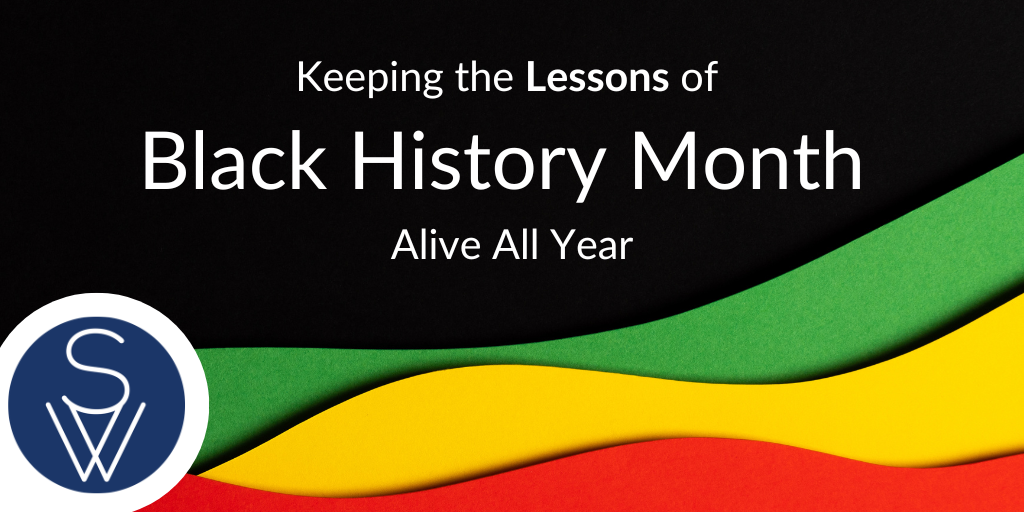
During this Black History Month, I hope you and your team have enjoyed immersing yourselves in some of the celebrations available to us all this February. As we approach the end of the month, it feels like the right time to step back and reflect on how we can take the lessons of Black History and use them to do better as employers and community members. What can we do to advance the ideals of diversity, equity, and inclusion? How do we ensure they reverberate for our teams and shape our efforts going forward? At their core, these ideals are not only about becoming wiser, more inclusive human beings in our personal lives. They're also a rallying cry, encouraging us to reconsider the systems, practices, and structures that continue to get in the way of achieving diversity and equity in the workplace.
Here are some things we're learning along the way that are important for all employers to remember as we continue on our journey.
Building a Diverse Team Isn’t Just About Your Recruiting and Hiring Practices
True inclusivity doesn't begin and end with a successful hire. It demands an environment where various perspectives are more than present; they're actively valued, heard, and included. A workplace where every employee feels respected and empowered can increase productivity and satisfaction. Does this just happen organically when you redefine and expand your recruiting practices to find candidates from underrepresented groups? No. And that seems to be one of the areas where employers' highest hopes meet their earliest obstacles. In reality, it is only possible to sustain true diversity within your organization after you've done the longer, harder work of making changes within yourself, your leadership team, and your organization.
It Takes a Re-think of the Very Hiring and Retention Models that Once Worked (for Less Diverse Teams)
Diversity success is a leadership challenge. Sometimes, it can be very hard to strip off the blinders and recognize that the structures that worked for us in the past - and made us feel very comfortable with how we ran things - might just be the obstacles in our way now. Successful diversity and inclusion strategies often involve reevaluating long-standing hiring, compensation, benefits, collaboration, and retention models once designed with a homogeneous workforce in mind. It can be difficult time to recognize and challenge the old one-size-fits-all approach. But how can we visualize better pathways forward if we're not willing to do that?
Remember that Diverse Teams Drive More Profitable Companies
The empirical link between workplace diversity and profitability is well-established, with a body of evidence growing yearly. McKinsey's 2023 study, "Diversity Matters Even More: The Case for Holistic Impact," provides robust data showing that companies with greater ethnic and cultural diversity are more innovative and more likely to outperform their less diverse counterparts. The study further strengthens the argument that companies view diversity as a key lever in driving economic success, making the relentless pursuit of an inclusive and diverse workforce not just a moral imperative but a definitive strategic advantage.
This is a Leadership Challenge, Not the Responsibility of Your Black Employees
You hire your employees for their skills and expertise in the role defined under their job titles. Unless specifically hired as diversity experts, your Black employees are not your default experts in diversity strategy. While it's important to listen to and amplify the voices of these employees, the impetus for - and the investment in - change must come from the top. Leaders must educate themselves on systemic inequities, be willing to have difficult conversations and lead by example in championing diversity initiatives. This proactive approach sends a powerful message that the organization is committed to cultivating an inclusive workplace for everyone.
It's Time to Put Your Money Where Your Diversity Goals Are
Transformative change toward a truly diverse and inclusive work environment does not come without costs. Like better technology, better systems require investment. It's not enough to merely set diversity goals; organizations must allocate appropriate funding and resources to achieve them. Are you measuring and reporting on your progress? Are your reports helping you identify areas for improvement? Are you showing improvement over time? If you haven't done so, it may be time to budget for a credible external diversity consultant, find one, get okay with discomfort, and move forward.
I hope we can all look back on Black History Month as more than a celebration this year. I hope we can leverage it to remind us what can - and must - do better to end underemployment and achieve true diversity and inclusion in our workplaces.






